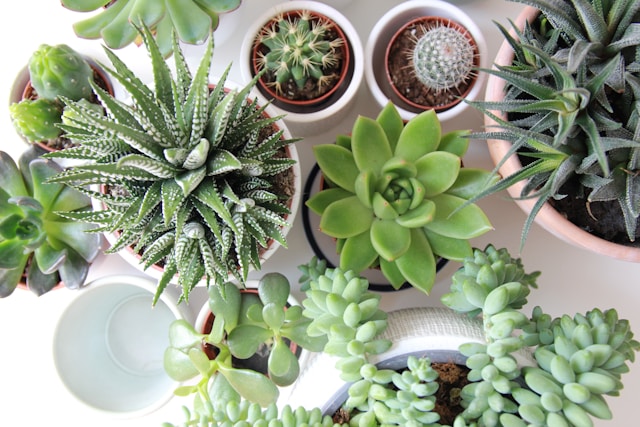Jelly bean succulents, scientifically known as Sedum rubrotinctum, are vibrant and low-maintenance plants that bring a pop of color to any garden or indoor space. Their plump, jelly bean-like leaves change hues based on sunlight exposure, making them an attractive choice for succulent enthusiasts. Whether you’re a seasoned gardener or a beginner, jelly bean succulents are easy to care for and propagate, and here is the ultimate guide to jelly bean succulents.
In this guide, we’ll explore different types of jelly bean succulents, their ideal growing conditions, and how to keep them thriving year-round. There is full Ultimate Guide to Jelly Bean Succulents:
1. Green Jelly Bean (Sedum rubrotinctum)
Overview
The green jelly bean succulent is an evergreen perennial with small, bead-like leaves. When exposed to bright sunlight, the leaves turn a reddish hue. If grown in low-light conditions, they remain green.
Care Tips
- Soil: Well-draining soil is essential. Use a cactus mix or blend potting soil with perlite to improve aeration.
- Light: Needs at least 6 hours of bright sunlight daily. Protect from intense afternoon sun to prevent leaf burn.
- Temperature: Prefers warm temperatures; avoid exposure to frost.
- Watering: Water when the soil is dry. Reduce watering in winter to prevent root rot.
- Propagation: Easily propagated through stem cuttings. Allow cuttings to dry before planting to prevent rot.
2. Pink Jelly Bean (Sedum Rubrotinctum ‘Aurora’)
Overview
The Aurora variety stands out with its pink, cream, and lime-green leaves, making it a unique addition to succulent collections.
Care Tips
- Soil: Well-draining, sandy, or cactus mix soil is ideal.
- Light: Prefers bright, indirect sunlight. Protect from the harsh midday sun.
- Temperature: Thrives in temperatures between 50°F and 65°F at night and 60°F to 75°F during the day.
- Watering: Water every 7–10 days in summer and reduce watering in cooler months.
- Fertilization: Use a diluted succulent fertilizer every 2–3 weeks during the growing season.
- Propagation: Can be propagated using either leaf or stem cuttings. Stem propagation is faster and more effective.

3. Giant Jelly Bean (Sedum Lucidum)
Overview
The Sedum Lucidum features glossy green leaves with red edges and produces small white flowers in the spring. It can grow up to 18 inches tall, making it a great choice for outdoor gardens.
Care Tips
- Soil: Use a mix of potting soil, peat moss, and perlite for optimal drainage.
- Light: Needs at least 2–4 hours of direct afternoon sunlight.
- Temperature: Thrives in temperatures between 65°F and 75°F but must be protected from frost.
- Watering: Water more frequently in spring and summer; reduce watering in winter.
- Fertilization: Use a slow-releasing nitrogen-based fertilizer during the growing season.
- Propagation: Propagate via stem or leaf cuttings. Allow cuttings to dry before planting.
4. Blue Jelly Bean (Sedum pachyphyllum)
Overview
This variety, also known as “Many Fingers,” has elongated, chubby blue-green leaves with reddish tips. It’s a drought-tolerant plant that requires minimal care.
Care Tips
- Soil: Prefers well-draining, aerated soil. A cactus mix with added sand and perlite works best.
- Light: Requires 3–4 hours of direct sunlight. If grown indoors, place near a south-facing window.
- Temperature: Grows best between 65°F and 75°F in summer. Keep indoors if temperatures drop below 50°F.
- Watering: Water when the soil is completely dry. Reduce watering in winter.
- Fertilization: Feed once a month with a balanced, diluted succulent fertilizer during spring and summer.
- Propagation: Use leaf cuttings for propagation. Allow cuttings to dry before placing them on the soil.
5. Donkey’s Tail (Sedum morganianum)
Overview
This trailing succulent is ideal for hanging baskets, featuring cascading stems covered in tightly packed, plump leaves. It is highly drought-tolerant and low-maintenance.
Care Tips
- Soil: Prefers a well-draining mix, such as cactus soil combined with perlite.
- Light: Needs at least 5–6 hours of bright, indirect sunlight. Can tolerate some direct morning light.
- Temperature: Thrives in temperatures between 65°F and 75°F. Protect from frost.
- Watering: Water sparingly; only when the soil is dry. Avoid overwatering, as this can cause root rot.
- Fertilization: Apply a diluted, balanced fertilizer once a month during the growing season.
- Propagation: Easily propagated from leaves or stem cuttings. Place cuttings on dry soil and mist occasionally.
Jelly bean succulents are a fantastic addition to any garden or indoor space due to their vibrant colors, ease of care, and drought tolerance. By providing the right soil, light, and watering schedule, you can enjoy these resilient plants year-round. Whether you choose the classic green variety or the colorful Aurora, these succulents are sure to brighten up your home.
Do you have a favorite type of jelly bean succulent? Let us know in the comments below at Sow Haven!

